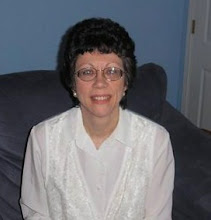The thyroid gland sits at the base of the neck. If you wore a tie, it would be where the knot lies - two lobes on either side of the trachea. Considered a master gland, because of its importance to the body's metabolism, the thyroid's main functions are to create thyroid hormone that forms protein RNA and oxygenates cells. (1)
The gland regulates growth and metabolism, and it releases hormones that affect numerous bodily functions such as heartbeat, temperature, digestion, calorie burning and hair growth.
Thyroid hormones are made from iodine and the amino acid tyrosine. A thyroid hormone deficiency results from a lack of stimulation by the pituitary gland, the master gland located in the brain that secretes the thyroid stimulating hormone (TSH). (2)
Symptoms run the gamut. They include weight gain, depression, fatigue, cold hands and feet, mental disorders, infertility, miscarriage, poor sex drive, heavy or irregular menstruation, high cholesterol, hair loss, dry skin, pale skin, brittle hair, thin and grooved fingernails, muscle weakness, stiff joints, heart problems, constipation, goiters and kidney problems. Since metabolism breaks down with a thyroid problem, having many different ailments can signal a dysfunction. (3)
An article in the British Medical Journal addressed a study in which "six percent of children with Down's syndrome have thyroid disorders, a rate roughly 28 times that of the general population." (4)
Researchers at the Department of Medicine, National University Hospital, Singapore, backed this up when they found a significant link between Down's syndrome and autoimmune thyroid disease, usually hypothyroidism. (5)
Even sleep apnea, a situation where breathing stops during sleep, is shown in studies to be caused by hypothyroidism. When the hypothyroidism is treated, not only is sleep apnea alleviated, but overall sleep is improved. Bashir A. Chaudhary, M.D., of the Sleep Disorder Center, Medical College of Georgia in Augusta, suggests it is reasonable to evaluate thyroid function in all sleep apnea patients. (6)
References:
(1) Braverman, Eric, M.D., and Pfeiffer, Carl C., M.D., Ph.D., The Healing Nutrients Within, Keats Publishing, New Canaan, CT, 1987.
(2) Krampf, Leslie, "Natural Help for Hypothyroidism," Vegetarian Times, n. 207, p. 122, November 1994.
(3) Murray, Michael, M.D., and Pizzorno, Joseph, N.D., Encyclopedia of Natural Medicine, Prima Publishing, Rocklin, CA, p. 388-389, 1991.
(4) Thorpe-Beeston, J.G., et al, "Thyroid Function in Fetuses with Chromosomal Abnormalities," British Medical Journal, v. 302, n. 6777, p. 628, March 16, 1991.
(5) Tambyah P.A. and Cheah J.S., "Hyperthyroidism and Down Syndrome," Annual Academy of Medicine, v. 22, n. 4, p. 603-605, July 1993.
(6) Kittle, William M., M.D., and Chaudhary, Bashir, M.D., "Sleep Apnea and Hypothyroidism," Southern Medical Journal, v. 81, n. 11, p. 1421-1425, November 1988.

No comments:
Post a Comment